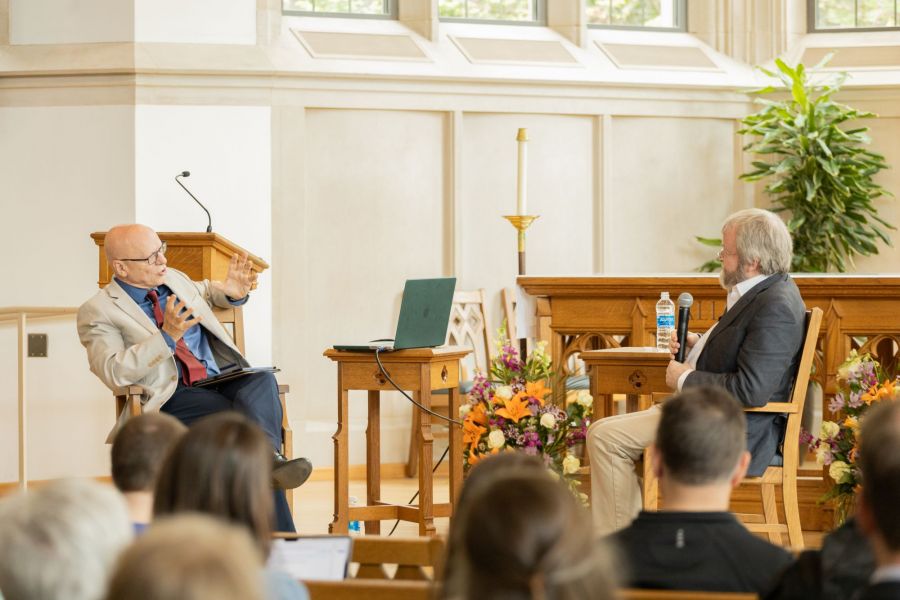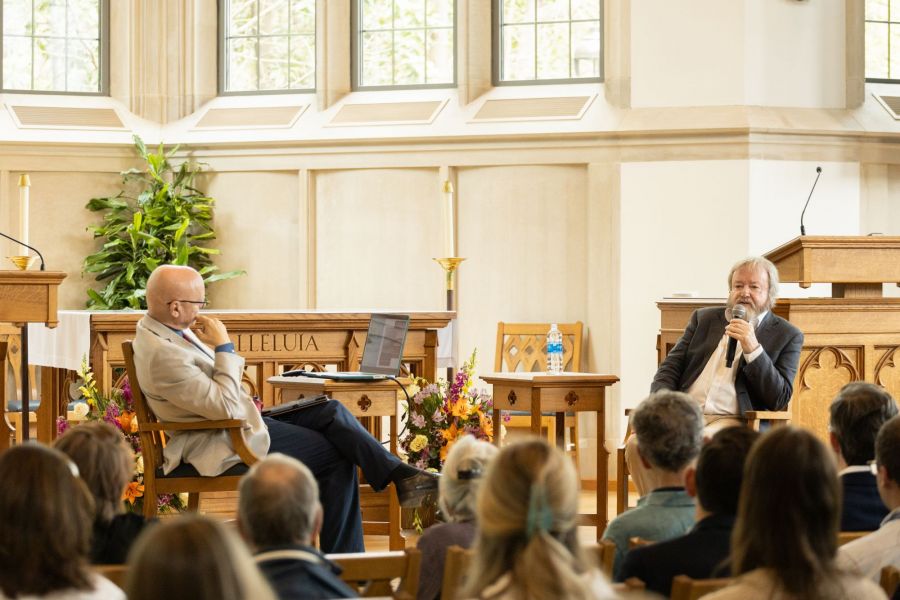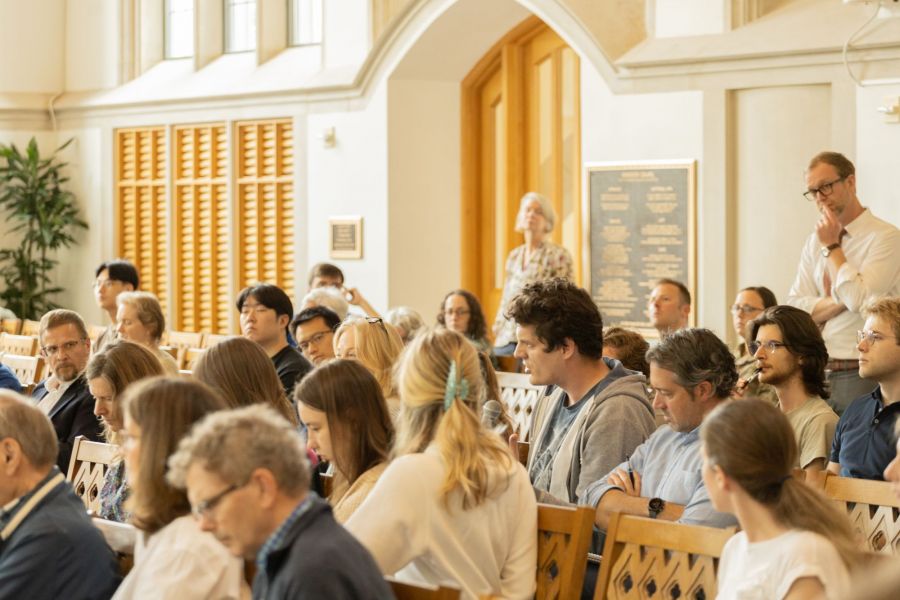On April 3, 2024, Duke Initiatives in Theology and the Arts hosted literary scholar, philosopher, and psychologist Dr. Iain McGilchrist for a public conversation with DITA Director Dr. Jeremy Begbie. The best-selling author of The Master and His Emissary and the two-volume work The Matter with Things, McGilchrist is known widely for his research on brain hemisphere theory—particularly as a lens for understanding Western culture over the last few centuries.
The conversation opened with an exploration of brain hemisphere theory—which is often dismissed as a pop myth. Contrary to what is often thought, the difference between the left and right brain has to do with attention. “The right hemisphere has sustained, vigilant open attention to whatever there is without any kind of preconception," said Dr. McGilchrist. "In the left hemisphere’s world, there are things. Things we know we want. That attention generates a world made up of isolation, fragments, bits.” The left brain, with its narrow focus, wants to “get and grasp,” but it needs the right brain if humans are to make sense of the world.
For McGilchrist, our culture has become dominated by left-brain attention, and this has impacted everything—from education to the arts, and (not least) “the sacred.” We imagine that we are “masters of creation” and lose our sense for awe and wonder. We have been bewitched by mechanistic models of what it is to be human, forgetting that “we are nothing like machines.” Somehow, we need to learn to see ourselves and the world differently.






